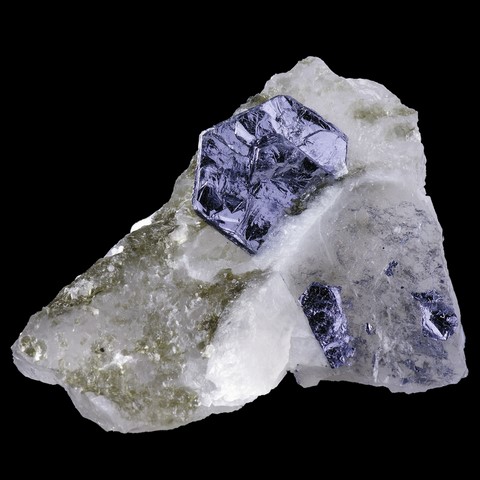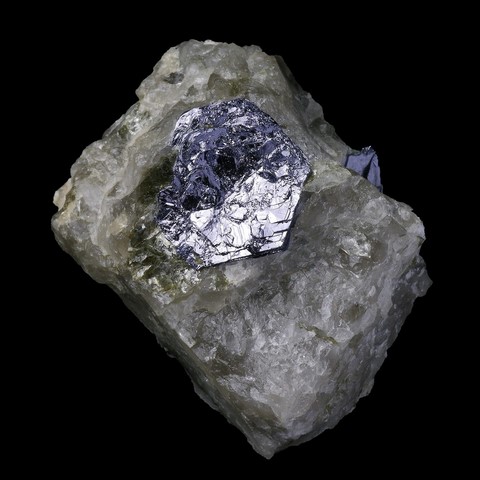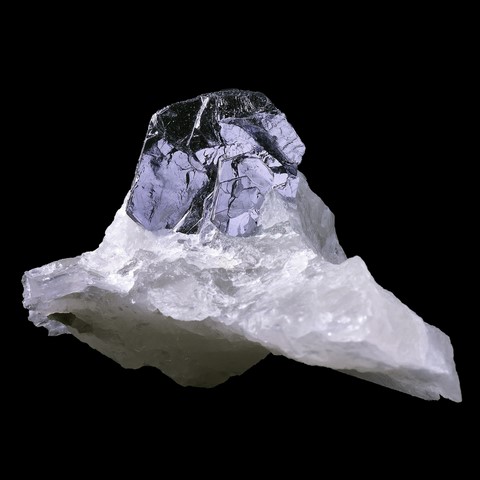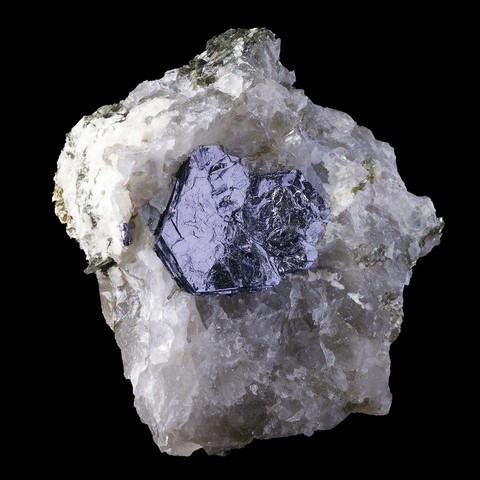MOLYBDENITE
Class : Sulfides and sulfosalts
Subclass : Sulfides
Crystal System : Hexagonal
Chemistry : Mo2S2
Rarity : Quite common
Molybdenite is a common primary sulphide in high temperature hydrothermal deposits (copper porphyries, skarns, pneumatolytic veins) and granitic pegmatites. It owes its name to the Greek molubdos (lead) as a result of a confusion of ancient authors between galena, graphite and this mineral. It has a metallic luster, a gray color and a perfect lamellar cleavage. Molybdenite occurs as hexagonal, often deformed and frequently included, tabular crystals, as well as thin, flexible lamellae. Of low hardness (1 to 1.5), molybdenite has a creamy touch and written on paper or porcelain. This mineral is one of the only molybdenum ore but also rhenium ore, present in small amounts in the crystal lattice of this mineral.
Molybdenite in the World
Molybdenite in France
Twinning
No known twinning for this species.
Fakes and treatments
No fake inventories for this species.
Hardness : 1 to 1.5
Density : 4.62 to 4.73
Fracture : Flexible
Trace : Bluish-gray
TP : Opaque
IR : -
Biréfringence : -
Caractère optique : -
Pléochroïsme : -
Fluorescence : None
Solubilité : Nitric acid
Magnétisme : None
Radioactivité : None





